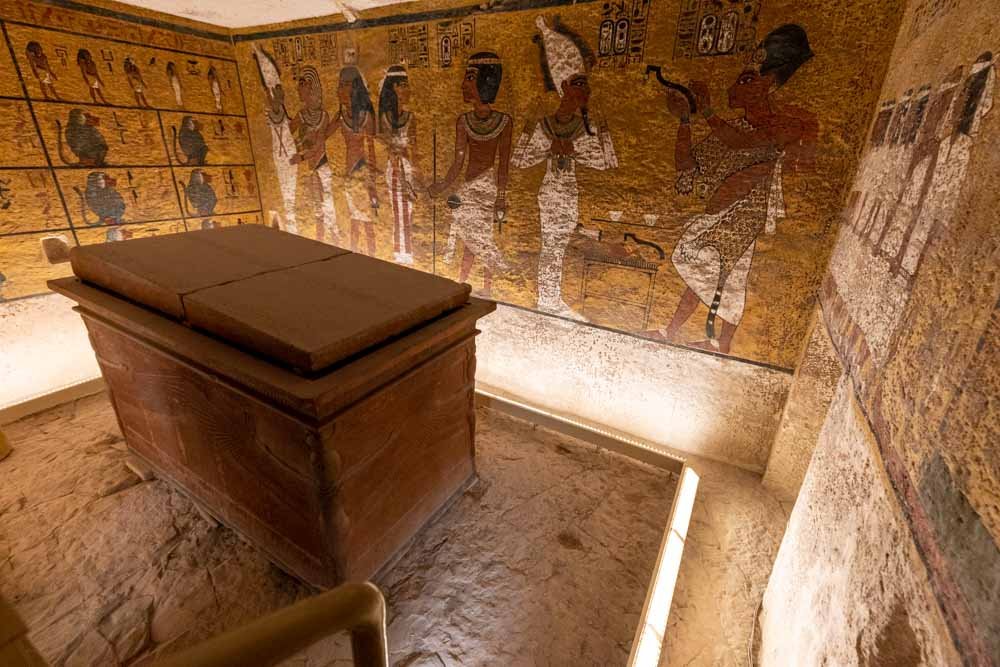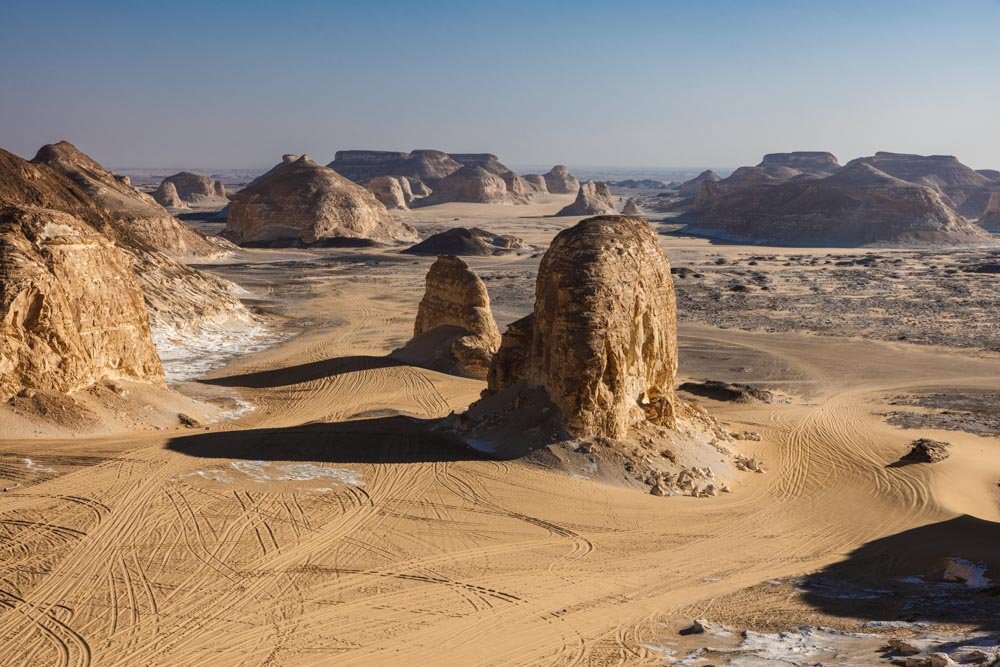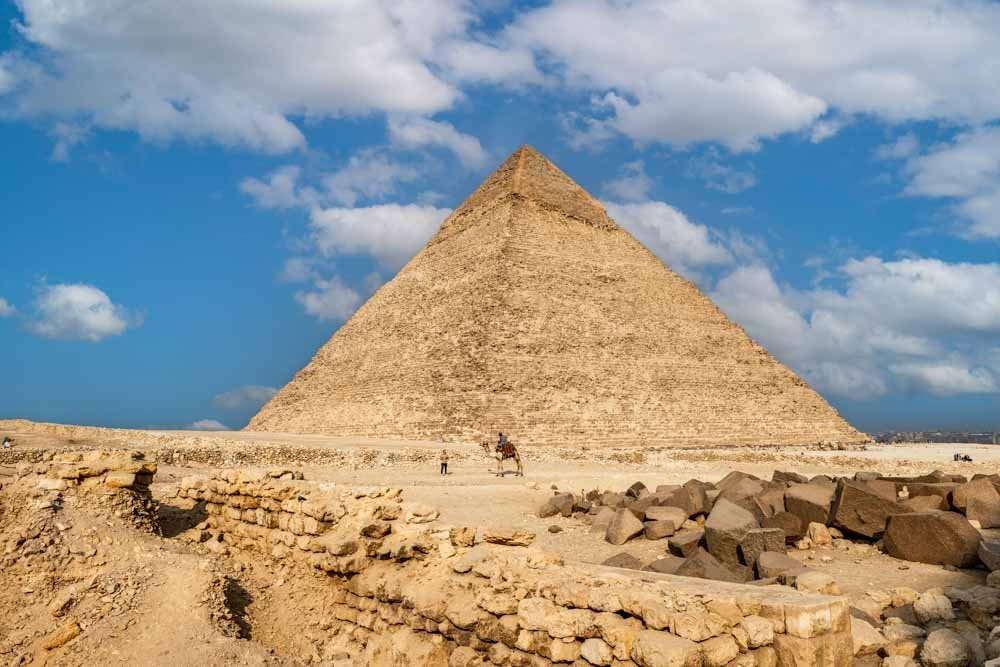Tutankhamun is the most famous of all the pharaohs. In fact, he’s usually the only pharaoh that most people can name if they haven’t been to Egypt. The discovery of his tomb in 1922 caused a sensation. Most tombs when discovered had already been raided, but Tutankhamun's was intact and full of treasure. This along with the fact the pharaoh died at just 19 - and no one knows how - sealed the deal, and Tutankhamun has been a household name ever since.
Of course, that means that access to his tomb does not come as part of the general entry ticket to the Valley of the Kings. On my first visit to Luxor many years ago, I was told that there was not much to see inside Tutankhamun's tomb and it wasn’t worth the additional cost. On my second visit I decided I wanted to see if that was actually true.
Here’s what to expect from Tutankhamun's tomb and whether it’s worth the money. We’re also sharing a few little known alternatives if you are on a tight budget.
Visiting Tutankhamun's Tomb
Tutankhamun's tomb entry fee
To visit Tutankhamun’s tomb, you’ll need to buy the standard entry ticket to the Valley of the Kings (240 EGP/USD $7.80) and an additional ticket. At time of writing, the additional fee is 360 EGP, which is roughly USD $12, although it was closer to $20 a few months ago before the pound crashed against the dollar. Not a huge amount of money, but enough that it definitely puts some people off.
It’s included in both versions of the Luxor Pass so if you’re planning on buying one of those, then a visit is of course a no brainer.
The experience
Tutankhamun's tomb is located 200m from the visitor centre. You then have a staircase down into the tomb, followed by a wooden ramp with slats. It’s not a difficult tomb to access and will be suitable for anyone who can manage a few staircases down, and then back up again.
As Tutankhamun died so young this is not one of the more ornate and richly decorated tombs. In fact, only the area around the sarcophagus is painted.
This is the reason that I was advised not to bother visiting on my first trip to Luxor.
However, what Tutankhamun's tomb does have - which is totally unique to it within the valley - is the mummy of King Tut himself.
We didn’t realise this ahead of time and were quite taken aback to see it there. It’s a little creepy of course, but quite fascinating.
As with all tombs, none of the treasure is there; if you want to see the magnificent funerary mask and other objects that were found inside the tomb, you’ll need to head to the Egyptian Museum in Cairo (soon to be Giza).
In terms of artwork, the area surrounding the sarcophagus has many fabulous paintings, including a whole wall of baboons! The paintings do suffer from brown spots - which are microbiological, and were present when the tomb was first discovered - but overall they are in very good condition.
You cannot walk down into the area where the sarcophagus is, but you still get a great view. However, if you want to see the paintings in more detail, there is another option open to you.
The replica of Tutankhamun's Tomb - better than it sounds!
That’s right, there’s an exact replica of Tutankhamun's tomb and you can visit for just 80 EGP, about USD $2.60 (and that includes entry to Howard Carter’s house, which is where it is located).
Now, I know you are probably thinking a replica sounds a bit naff (or that’s what I was thinking anyway) but in fact it is absolutely indistinguishable from the real thing.
It’s literally a carbon copy down to the brown spots! The fact that it is not the real thing means you can walk right down to the sarcophagus and see all the artwork up close, as well as the markings on the sarcophagus itself.
The replica tomb is packed with information about discovering the tomb, how Howard Carter meticulously catalogued it all and the technology they used to recreate an exact copy.
I’d actually recommend visiting both tombs if you have time, but if you don’t want to spend the money on visiting the real tomb then it is a good alternative, although it’s not as atmospheric as option number two…
The Tomb of Ay - the original tomb meant for Tutankhamun
As mentioned above, due to Tutankhamun’s untimely death, the tomb he was buried in was not the tomb that was actually meant for him. He was originally going to be buried in what is now the Tomb of Ay (KV 23 in the Valley of the Kings).
Of all the tombs we visited in the Valley of the Kings and beyond, the Tomb of Ay had the most off the beaten track Indiana Jones vibe to it. It’s not listed on the open tombs print out at the visitor centre when you buy your tickets, nor at the security point, but it is in fact open!
You don’t access it from the visitor centre, but instead take the 2km gravel road just beside the main car park. The gravel road is in excellent condition and suitable for any cars. It’s so rarely visited that the tomb guardian doesn’t actually sit by the tomb, but instead waits to see for anyone passing along the road and then zips ahead of you on a motorbike to open it!
The mountains loom over the road as you wind your way towards the tomb and it definitely creates an air of suspense.
Once you get to the ‘car park’ there’s a very short (couple of minutes) walk uphill to enter the tomb.
You then have to descend a few staircases, one of which is steepish, before you will arrive in a chamber with a large sarcophagus. Your eye will automatically be drawn to a big wall of baboons! It is identical to the one in Tutankhamun's tomb, which was surreal to see!
There are also several more richly painted walls. Although there is a fair amount of damage, it’s still a fabulous tomb to explore.
It’s quite dark and very atmospheric, not least because you are completely left to your own devices. This is the only tomb of the 18 we visited where we were not followed by the tomb guardian at any point. We could admire every painting in peace and it made a real difference to the overall feel.
It became one of my favourite tombs and up there with the premium tombs which cost far more. It’s the Egypt you dream of before visiting, it feels like you’ve stepped back in time, or perhaps onto a movie set.
It was the last tomb we visited and definitely one of the most memorable.
If you want to visit, but don’t have a Luxor Pass then you will need to pay an additional 60 EGP (USD $2 at time of writing). We’d highly recommend it if you like an offbeat experience.
The verdict: so is it worth visiting Tutankhamun's Tomb?
Contrary to what many people say, for me it’s a 100% yes. Firstly it’s iconic, and contains the mummy - which you won’t find in any other tomb. Secondly, in years to come, it’s unlikely you’ll be able to visit anymore. The replica tomb was made to safeguard the future of the real tomb, which I took to mean it will one day close to the public. There is already a fair amount of damage and it will only worsen over time.
I’d say visit while you can! If you’re on a really tight budget, then opt for the replica… but in reality there’s nothing quite like the feeling you get when standing in the real thing!
The history of Tutankhamun
Tutankhamun is one of those historical figures whose fame doesn’t really befit the stature and legacy of their reign. He became pharaoh at the age of nine and reigned for about 10 years before his very early death. He presided over Egypt during a very turbulent time, as it was not long after the tumultuous reign of Akhenaten, a pharaoh who decided to fundamentally change the religion of Ancient Egypt from multiple gods to a single god, Aten.
Tutankhamun reverted Egypt back to polytheism again and worked to restore Egypt from the economically and diplomatically weak position he had inherited. As a young pharaoh, he was advised by Ay and Horemheb, two people who later became pharaohs themselves.
Whilst his early death is a mystery, it is clear that he suffered from many physical ailments during his life, including scoliosis and difficulties walking, evidenced by the fact he needed a cane (which was found in his tomb).
The main reason for Tutankhamun’s fame was the discovery of his tomb. It had remained hidden by the tomb of Rameses V and VI above, which, along with rubble from previous floods, kept it a secret from tomb robbers for thousands of years. So when Howard Carter discovered it in 1922, Tutankhamun’s treasure was still there, unlike any royal tomb discovered before.
The most famous piece is his gold funerary mask, which is on display at the Egyptian Museum in Cairo. It’s hard not be awed when you see it, especially as it’s over 3,000 years old. You can also see many other artefacts from Tutankhamun’s tomb, including his sarcophagus, jewellery and golden thrones.
Getting to the Valley of the Kings
Assuming you don’t want to visit on a tour, you can easily hire a taxi in Luxor or at the ferry terminal on the West Bank. You’ll need to haggle, and make sure you state the wait time you want included. Visits to the Valley of the Kings are usually made in conjunction with the Valley of the Queens and other sites on the West Bank.
How much you pay will depend on how much you want to haggle and how far away you can negotiate from a big hotel. If you’re hanging around places like the Hilton, it’s hard because the drivers all have the rates the hotel charges (600 EGP for 5 hours at time of writing). This is much more than you can pay by negotiating with a driver directly and as I say, preferably not near an expensive hotel!
The cheapest we were offered pre-haggling was 400 EGP - note that we were travelling at a time when the Egyptian pound had been severely weakened against the US dollar, so prices were higher than they had been.
The journey between Luxor and the Valley of the Kings takes around 50 minutes. It’s much quicker if you take the ferry. You should get a cheaper taxi price from the West Bank, but we always went from Luxor city.
This post may contain affiliate links, meaning at no additional cost to you, that we will earn a small commission if you click through and decide to make a purchase. This helps towards the costs of running our website. Thanks for your support!







































